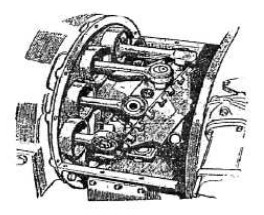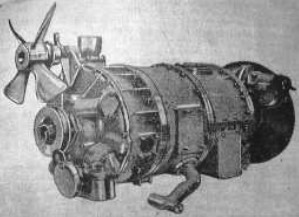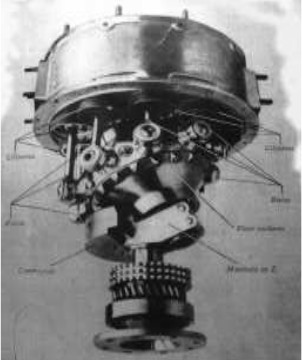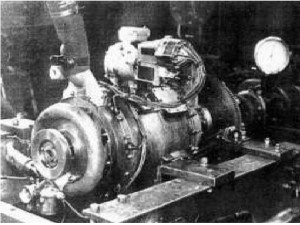Updated: 06-Oct-2021
Axial engine aka barrel or Z-crank engine with 9 axially arranged cylinders and a displacement of 7,000 cc.
-It uses the reverse Vickers Stratopower hydraulic pump principle. It has an inclined plate driven by all the connecting rods, making it slide and rotate.

"Bristol Tramways cutaway"
-Finally its use in aviation was rejected, (only 125 hp) and they continued to build them for commercial vehicles.
-The operating principle is the same as others like Redrup, Alfaro, etc.
From appendix 6: Of course, large companies such as Bristol (at that time Bristol-Siddeley, and eventually Rolls-Royce) did trials on all types of engines, and axial engines were a fever for a long time.
-We can show new Bristol axial engines. Perhaps in this first one, we cannot see any evidence of an aero engine, but there were others.

"Bristol Tramways axial engine"
-The radiator fan for a possible radiator and a rear transmission do not suggest its application for aviation.
-This engine appears in the main text as "Bristol-Tramways" which indicates that they were manufacturing for terrestrial vehicles. The front plate can reveal its air vocation, and the cooling fan for a possible radiator at the back gives it a very adaptable aerodynamic shape.

"Detalle del plato oscilante y bielas"
-Above, there is a real part of the engine, in which we see the power transmission plate and the wobble-plate.
-To complement this brand's main text about axial piston engines of the 1930's, which were designed by Charles Redrup (see Redrup).
-They made several versions from RR1 to RR4: the RR1 with poppet valves, which were modified with rotary valves.
-The RR2 also had poppet valves. And RR3 and RR4 were equipped with rotary valves.
-They had 9 cylinders arranged around the power shaft and were water cooled.

"Engine diagram from 1934"
-And the model that was tested on the bench in 1936.

"Bristol Tramways engine on test bench" (PiP)


